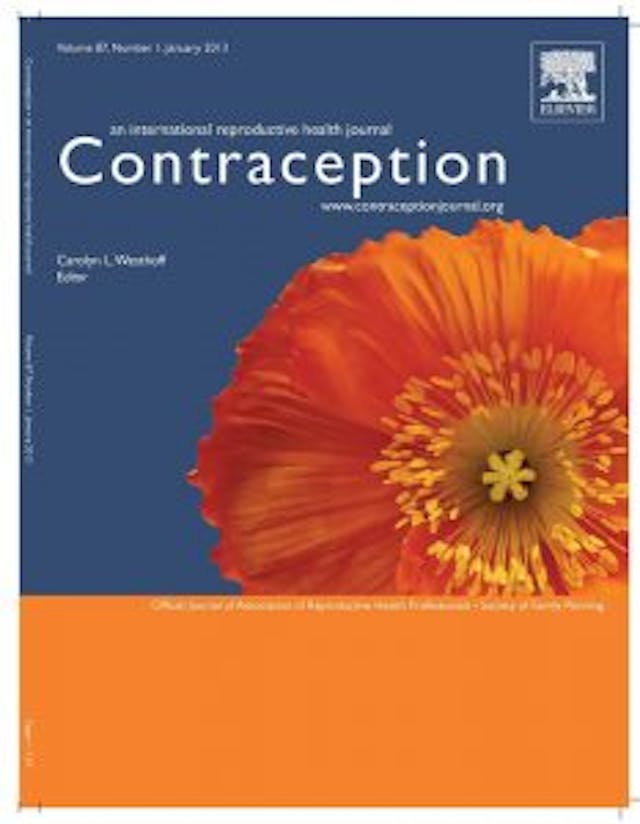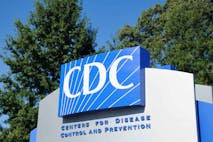
US pro-life resolve put to test with UN resolution on humanitarian operations
Stefano Gennarini, J.D.
·
Investigative·By Carole Novielli
Can we trust the new study claiming women are sure about their abortions?
A recent study published in the journal Contraception has been cited by several media outlets as supporting the idea that mandatory waiting periods for women seeking abortion are unnecessary. Women seeking abortion are more certain of their choice than women making other “health” related decisions, the authors claim. Five hundred Utah women in four clinics were surveyed before their abortions, and 63% of the women were surveyed three weeks later.
A large percentage had their abortions, while 11% were still pregnant. The findings “directly challenge the narrative that decision-making on abortion is somehow exceptional,” the study’s lead author, epidemiologist Lauren Ralph, claimed. “And it calls into question whether women would universally benefit” from restrictions such as waiting periods and mandatory counseling services or even ultrasounds, Ralph told Slate.
But can we trust this study, its authors, or the journal which published it? Media outlets failed to question the affiliations or associations of the study’s authors or of those leading the publication journal itself — but they should have, because those involved have significant ties to the abortion industry. The publication’s editorial board itself is full of industry personnel who have a financial interest in furthering abortion, as do the study’s authors.
The Journal
The current editor of Contraception is none other than Dr. Carolyn Westhoff, the Planned Parenthood Federation of America senior medical advisor who was heard and seen on undercover Center for Medical Progress recordings discussing how the fetal tissue (including the gonads of unborn baby boys) she provides for research is “fresh.” Westhoff was also involved in the clinical trials of RU-486 and has previously testified in favor of keeping partial-birth abortion legal:

Other members of the editorial board with similar ties to the abortion industry and Planned Parenthood include:
• David K. Turok, an author of the recently published study, is on the editorial board of Contraception, is an associate professor at the University of Utah, and is the director of abortion and vasectomy services at Planned Parenthood Association of Utah.
• Mitchell Creinin, MD, listed as Contraception‘s current deputy editor, is an abortionist who was involved in the clinical trials of RU-486.
• Paul F. A. Van Look, MD, PhD, is an adviser to the International Medical Advisory Panel of the International Planned Parenthood Federation.
• Paul Blumenthal, MD, MPH, was involved in the clinical trials of RU-486 and serves as a member of the National Abortion Federation’s board of directors.
• Philip D. Darney, MD, has served on the boards of Planned Parenthood Federation of America and the Guttmacher Institute, Planned Parenthood’s former research arm.
• Lawrence B. Finer, PhD, is vice president for domestic research at the Guttmacher Institute.
• Kristine Gemzell-Danielsson, MD, MPH, is president of the International Federation of Professional Abortion and Contraception Associates. FIPACA’s mission includes “obtaining the right to abortion for every woman” and “freedom of access to all abortion methods in all countries.” She is a member of the Population Council and a “pioneer in research on medical abortion with mifepristone.”
• Marji Gold, MD, wrote the first curriculum for training non-OBGYN clinicians in early abortion practice and has worked with “fellows to develop their skills as abortion providers, trainers, and leaders in the integration of abortion.” She is listed as a member of the board of directors of the National Abortion Federation and Medical Students for Choice. Gold has trained residents in abortion at Planned Parenthood in New York City.
• David Grimes, MD, has held various positions at the CDC, even serving several terms as head of the abortion surveillance branch, and was a presenter at a 1976 abortion conference sponsored by multiple pro-abortion groups. In 1990, he chaired a symposium held by the National Abortion Federation and ACOG. In 1991, the NAF listed him as a member and award recipient.
• Daniel A. Grossman, MD, worked with the Mexico City Population Council and testified before a U.S. District Court in 2014 that he provides abortions as a consultant to Planned Parenthood Shasta Pacific. He also serves as a liaison member of the PPFA National Medical Committee.
• Mark Nichols, MD, served as the medical director of Planned Parenthood of Columbia/Willamette for 19 years, where he “directed the first provision of mifepristone in Oregon and the first Essure services through Planned Parenthood in the country” and was the “local principal investigator in the initial Population Council trial investigating mifepristone for first trimester abortion leading to FDA approval.” He was a founding member of the Society of Family Planning and member of the national medical committee of PPFA from 1996 to 2002.
• Maureen Paul, MD, MPH, is also a Planned Parenthood abortionist. From 1998-2012, Paul “served as medical director at three large Planned Parenthood affiliates in Massachusetts, San Francisco, and New York City.” She also “served on NAF’s Board of Directors from 1995-2002 (president 2000-2002) and on PPFA’s National Medical Committee from 2002-2007.”
• Elizabeth G. Raymond, MD, is a senior medical associate at Gynuity Health Projects which recently launched a mail-order telemedicine abortion pilot. She is also a Planned Parenthood provider, according to the Guttmacher Institute, which honored her with an award in 2005.
• Courtney A. Schreiber, MD, has taught abortion at Planned Parenthood and the University of Pennsylvania School of Medicine. Schreiber once testified that she had “provided this procedure [abortion] to over 5,000 patients as an integral component of my practice.”
• Jody Steinauer, MD, a founder of Medical Students for Choice and member of Physicians for Reproductive Health, teaches abortion at the University of California, San Francisco.
• Diana L. Taylor is on the faculty and staff of ANSIRH (see below) and is an active board member of the Reproductive Options Education Consortium in Nursing (Abortion Access Project); board member of Clinicians for Choice; and board chair (as well as a practicing clinician) of the San Francisco Women’s Community Clinic.
See a full list of the Journal’s 2016 Editorial Board here.
Contraception is the official journal of the Association of Reproductive Health Professionals and the Society of Family Planning. ARHP was originally founded as The American Association of Planned Parenthood Physicians (AAPPP) in 1963 by Planned Parenthood president, Alan Guttmacher, and has gone through multiple name changes.
Article continues below
Dear Reader,
Have you ever wanted to share the miracle of human development with little ones? Live Action is proud to present the "Baby Olivia" board book, which presents the content of Live Action's "Baby Olivia" fetal development video in a fun, new format. It's perfect for helping little minds understand the complex and beautiful process of human development in the womb.
Receive our brand new Baby Olivia board book when you give a one-time gift of $30 or more (or begin a new monthly gift of $15 or more).
ARHP wasn’t incorporated as an independent organization until 1990, but its connection to the abortion industry continues to this day. Planned Parenthood Federation of America and the ARHP have hosted annual meetings together since the early 1960s. In 1999, the PPFA National Medical Committee and ARHP held their first joint conference in Dallas, Texas.

The journal’s editorial board has, throughout its entire history, been stacked with names from within the abortion industry. Founding editor, abortionist Daniel R. Mishell, Jr., M.D., first published Contraception in January 1970. (Mishell was one of a select few abortionists who took part in the clinical trials of RU-486 — the abortion pill — in 2000.) Some other names from Contraception‘s earlier years include members of the Population Council (a non-governmental, Rockefeller-founded organization which develops and distributes long-acting reversible contraceptives in developing countries and which was originally headed by Frederick Osborn, a well-known eugenicist): Christopher Tietze (1973), a NAF board member and associate director with the Population Council; Sheldon Segal (1974), a Population Council director and researcher of the Norplant contraception device at the Population Council and Rockefeller Foundation; Howard Tatum (1975), an associate director at the Population Council; Andrudh K. Jain (1977), an assistant professor with the Population Council; C. Wayne Bardia (1988), another Population Council director; Abortionists David A. Grimes and Phillip Stubblefield (1988): Stubblefield was a medical director and board member of the Planned Parenthood League of Massachusetts and board member of the National Abortion Federation. In addition, he received an award from NARAL Pro-Choice America. Grimes was mentioned previously, among the current editors of the journal.

The Authors
Four of the study’s researchers (lead researcher Lauren J. Ralph and researchers Katrina Kimport, Sarah C.M. Roberts, and Diana Greene Foster) are among faculty and staff of Advancing New Standards in Reproductive Health (ANSIRH), a group which publishes workbooks on abortion training which they call an “all-inclusive curriculum with tools to train new abortion providers.”
ANSIRH was founded by late abortionist Felicia H. Stewart, who worked at abortion clinics in New York and California, and is credited with the introduction of the “Plan B” pill. Stewart also led the effort to allow midwives and nurse practitioners to perform abortions in California. She served on the boards of NARAL Pro-Choice America and the National Abortion Federation and was an associate medical director for Planned Parenthood of Sacramento Valley and a staff physician at Planned Parenthood facilities in San Francisco, San Jose, and Sacramento.

Study author Diana Greene Foster, on staff at ANSIRH, also sits on the board of the Later Abortion Initiative (LAI), a group with the mission of (among other things) “increas[ing] the number of sites where later abortion is available” and “expand[ing] the number of physicians who can perform later abortion, especially at 20 weeks’ gestation and beyond.” In addition, the organization’s mission also includes working with “communications, messaging and public relations experts to build support for later abortion and fight restrictions on later abortion at the state level.” Foster has been applauded by the abortion advocacy group, NARAL.
The fifth author in the study, David Turok, was listed above among current editors of Contraception.
While it is not a new strategy for the abortion industry to conduct its own “studies” and then publish them in periodicals they also manage, it is concerning that, in this case, the media has failed to point out the authors’ and journal’s abortion industry connections in the interest of full disclosure.
Live Action News is pro-life news and commentary from a pro-life perspective.
Contact editor@liveaction.org for questions, corrections, or if you are seeking permission to reprint any Live Action News content.
Guest Articles: To submit a guest article to Live Action News, email editor@liveaction.org with an attached Word document of 800-1000 words. Please also attach any photos relevant to your submission if applicable. If your submission is accepted for publication, you will be notified within three weeks. Guest articles are not compensated (see our Open License Agreement). Thank you for your interest in Live Action News!

Stefano Gennarini, J.D.
·
Investigative
Nancy Flanders
·
Investigative
Carole Novielli
·
Investigative
Carole Novielli
·
Investigative
Angeline Tan
·
Investigative
Carole Novielli
·
Investigative
Carole Novielli
·
Investigative
Carole Novielli
·
Abortion Pill
Carole Novielli
·
Analysis
Carole Novielli
·
Abortion Pill
Carole Novielli
·